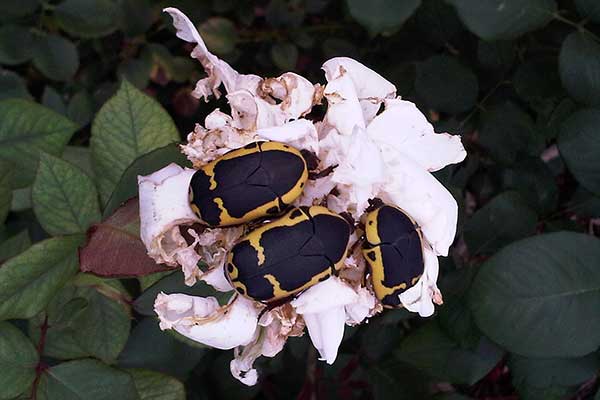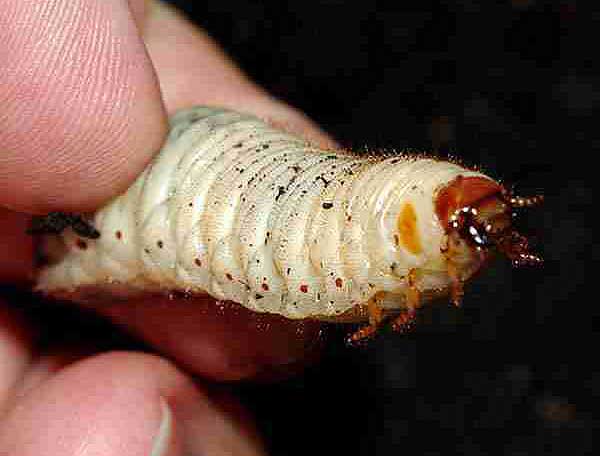Beetles grubs as food for chameleons
Various beetles grubs can serve as food for chameleons. Mealworms are probably the best known – and the least nutritious! Other beetle grubs typically come from genera that are too expensive to make sense to use as food.
A favourite for me has always been Flower Beetles.

The term Flower Beetle covers a range of species from the Dicronorrhina to the Pachnoda beetles but the care is very similar for all.
Pachnoda are the commonly found in pet shops and are ideal for breeding as food. They are relatively quick and easy to breed compared to other species, some of which can take a year or more from egg to adult.
A 20 to 40-litre plastic box for both grubs and adults is ideal (subject to size and number of adults). For laying fill the bottom 5cm of the box with organic compost and compress firmly. On top of this add a mix of well-rotted wood crumbled into small flakes, leaf litter and organic compost. Leave about 8 to 10cm between the top of the soil and the lid to allow for the adults to move about freely. The soil should be a total of at least 25cm deep.
It is good to have lumps of wood on the surface for the adults to clamber over, also a layer (about 2cm) of old leaf litter.
I feed the adults bananas and apples cut into quarters.
Easy to care for
Neither adults nor the grubs need a lot of attention but make sure that they have not eaten all of the substrate. New wood and leaves should be added regularly. Once the colony is going it will increase and last for some time, if well fed. The colony may need to be split. Generally, the rule is 1 litre of soil to one beetle grub. Don’t keep the container too moist but never allow it to dry out. Room temperature is ideal.

The beauty of Pachnoda beetles is that they pretty much take care of themselves and need minimal attention. They are readily eaten as grubs and are nutritious.
There are two things to look out for when feeding beetle grubs to chameleons. The first is that when bitten they exude a lot of black gunk. This is harmless but looks worrying: ignore it.
The second thing to watch for is the size of the grub. Second instar grubs about 2cm long are best, no bigger. Once the grubs reach third instar and larger than 2cm there is a risk that their mandibles will be large and strong enough to hurt your chameleon.
To learn more about how to breed a range of insects species as food for your chameleon, check out this book: Breeding Insects as feeder food
